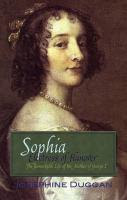Oscarshall was built between 1847 and 1852 and became the second palace built by the Bernadottes in the Norwegian capital. The long process of building the Royal Palace between 1825 and 1849 meant that many foreign artisans came to Norway and that Norwegian workers from them learnt new techniques on a higher level. At the same time the mid-19th century was a time when Norwegian art blossomed and it has been said that King Oscar I and Queen Josephina, both great patrons of art with artistic talents themselves, chose to let Norwegian workers build this palace and Norwegian artists decorate it to demonstrate what could be achieved in this country.
Unlike the Royal Palace, Oscarshall was paid for by the royal couple themselves – most of the money was probably Queen Josephina’s, which has led some people, including the current Queen, to suggest that it should perhaps have been called Josephineshall rather than Oscarshall.
The architect, Johan Henrik Nebelong (1817-1871), was a Dane who had himself come to Norway when the Royal Palace was built, acting as one of architect Hans D. F. Linstow’s assistants. The work on Oscarshall turned into a rather bitter affair for him, as he came into a conflict with Baron Ferdinand Wedel Jarlsberg, head of the Norwegian Court, who eventually managed to have him fired.
The slightly classicist, early neo-Gothic style of Oscarshall was at the time referred to as “English” in Norway, but the architectural inspiration should rather be sought in Germany. Two German palaces in particular have been pointed out as possible inspiration for Oscarshall – Babelsberg in Potsdam, built for the future Emperor Wilhelm I, and Hohenschwangau in Bavaria, built for Queen Josephina’s cousin, the future King Maximilian II of Bavaria.
Oscarshall is smaller than both of them. The main rooms are on the ground floor – the Dining Room is housed in a separate block, linked to the main block by a Tudor-inspired arch (third picture). The Dining Room is decorated with paintings by two of the most famous painters of the time – huge landscapes by Joachim Frich and a series of ovals showing idealised scenes from the lives of peasants by Adolph Tidemand. The walls of the main Drawing Room are covered in dark red velvet and have sculptures of medieval kings of Norway.
On the first floor is the King’s Drawing Room, perhaps the most important in addition to the Dining Room. The main attraction here, apart from the stunning view of the sea, are four huge landscapes painted by Hans Gude, a giant of Norwegian art history, and a frieze by Christopher Borch showing scenes from the 14th century legend of Fridthjof and Ingeborg. Next door is the King’s Bedroom, with a bed reminiscent of the Empire style. It has sometimes been claimed that Oscar I spent one night at Oscarshall, but the sources for this information are uncertain. On the second floor is the Queen’s Drawing Room and the Prince’s Room, which do not have their original furniture.
Oscarshall was never meant to be lived in, but as a place for excursions from the Royal Palace. Oscar I fell gravely ill the year it was completed, which meant that he rarely came there. In 1863 his heirs sold it to the state, but the King retained the right to use it. Oscar II thought of making it more inhabitable as a summer house, but in the end had several small villas built nearby and turned Oscarshall into a museum for the Bernadotte dynasty and their reign in 1881. The museum naturally closed with the deposal of the Bernadotte dynasty in 1905.
In 1929 it was decided that Oscarshall should become the residence of Crown Prince Olav and Crown Princess Märtha and an architectural contest for its reconstruction was held. None of the proposals were however quite satisfactory and eventually the newlyweds settled at Skaugum in Asker.
Oscarshall is sometimes used for official representation – there was for instance a lunch there to celebrate the silver wedding of the present King and Queen in 1993 – there are concerts in the summer and in 2005 there was an exhibition on King Oscar II and Queen Sophia to mark the centenary of the end of the union. With Oscarshall now restored and brought back to its former glory it is planned that it will be used more by the royal family in the future.
The renovation means that there are now modern facilities such as toilets and cloakrooms for the visitors, while the former kitchen building will be used for exhibitions. Most importantly the interiors have been returned to their original appearance. Before the palace closed in 2005, the velvet on the walls of the King’s Bedroom was for example faded into a brownish green. Now it is once again dark blue, which gives the room quite another appearance. The exterior of the palace is now white again, having been pink since shortly after the end of WWII.
The renovation also means that certain works of art and items of furniture added after 1852 have been removed. This is not entirely unproblematic as the absence of such traces may give the impression that Oscarshall has no history after the year it was completed.
The garden was originally in the English landscape style, but was changed into a more linear and classicist garden in 1927. The garden has not yet been returned to its original shape.
Pictures of the interiors can be seen here:
http://www.aftenposten.no/spesial/bildeserier/article3226353.ece
http://www.kongehuset.no/c79774/seksjonstekst/vis.html?tid=79779
In the future Oscarshall will be open to visitors during June, July and August, while the palace this year will stay open throughout September. Visitor information may be found at the Royal Court’s website:
http://www.kongehuset.no/c79786/artikkel/vis.html?tid=79791














